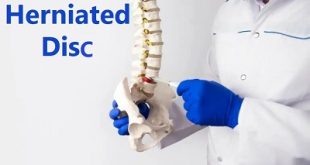Definition
Hyponatremia is a medical condition termed for a low concentration of sodium in the blood (serum). It is usually discovered on laboratory tests as a lower than normal sodium level in the blood. It will appear as sodium or Na+ in your lab results. Actually, the main problem in the vast number of situations is too much water that dilutes the Na+ value rather than too much sodium. As a result, water moves into body cells, causing them to swell. This swelling causes the major problem, which is a change in mental status that can progress to seizures or coma.
Hyponatremia can result from multiple diseases that often are affecting the lungs, liver or brain, heart problems like congestive heart failure, or medications. Most people recover fully with their doctor’s help.
Epidemiology
Hyponatremia is seen in about 4% of patients with chronic schizophrenia and occasionally in patients with other psychiatric disorders. Primary polydipsia is prominent in patients with psychosis, affecting nearly 7% of patients with schizophrenia.
In addition to the underlying psychosis, psychotropic drugs may cause the sensation of a dry mouth, which may contribute to increased water intake. Thus, causality between psychotropic agents and hyponatremia has been shown more persuasively with antidepressants and mainly with selective serotonin reuptake inhibitors (SSRIs). The incidence of hyponatremia caused by SSRIs varies widely, from 0.5% to 32%. In the majority of cases, hyponatremia occurs within the first few weeks of the onset of therapy, whereas normonatremia is achieved within 2 weeks after drug withdrawal.
Hyponatremia caused by SIADH is due to the increased release of antidiuretic hormone (ADH). SIADH has been associated with many drugs often used in psychiatric patients, including nicotine, barbiturates, carbamazepine, antipsychotics, and antidepressants.
Classification
Hyponatremia is classified as pseudo hyponatremia, true and translocational hyponatremia.
Normal serum osmolality is 280-295 mosm/kg. The serum osmolality (S Osm) can be calculated by the concentration in millimoles per liter of the major serum solutes according to the following equation: Sosm (mmol/kg) = (2 × serum [Na]) + (serum [glucose]/18) + (blood urea nitrogen/2.8).
Pseudo (normo-osmolal) or Isotonic hyponatremia
It is due to the presence of hypertriglyceridemia or an increase in plasma proteins in conditions such as multiple myeloma. In normal subjects, the plasma water is 93 percent of the plasma volume, fats and proteins account for the remaining 7 percent. Plasma water fraction falls below 80 percent in cases with marked hyperlipidemia (triglycerides >1500 mg/dL) or hyperproteinemia (protein >10 g/dL).
Here, the plasma water sodium concentration and plasma osmolality are unchanged, but the measured sodium concentration in the total plasma volume is reduced since the specimen contains less plasma water. In renal failure, the elevation in blood urea counteracts the fall in serum osmolality due to hyponatremia. However, the effective serum osmolality is appropriately reduced in this setting since urea is an ineffective osmole.
Translocational (hyperosmolal) or hypertonic or redistributive hyponatremia
It is due to presence of osmotically active solutes in the serum e.g., mannitol or glucose. When the plasma contains significant amounts of unmeasured solutes, such as mannitol or radiographic contrast agents, plasma osmolality cannot be calculated accurately and must be ascertained by direct measurement.
True (hypoosmolal) hyponatremia
It is associated with a reduction in serum osmolality and is further classified as euvolemic, hypervolemic and hypovolemic
-Hypovolemia hyponatremia
It is associated with low plasma volume. The causes of hypovolemic hyponatremia may be renal or non-renal. Cerebral salt wasting (CSW): Resembles SIADH except that in CSW renal salt wasting and volume depletion is the main defect with the secondary rise in ADH whereas a high arginine vasopressin (AVP) level is the primary etiologic event in patients with SIADH
-Euvolemic hyponatremia
It is the most common and accounts for 60% of all cases of hyponatremia. The commonest cause of euvolemic hyponatremia is Syndrome of inappropriate secretion of Antidiuretic hormone (SIADH).
Risk factors
Certain factors increase the risk of developing hyponatremia, including:
- Age
- Having specific conditions, such as SIADH or kidney, heart, or liver disease
- Taking certain diuretics, antidepressants, or pain medications
- Taking ecstasy
- Drinking excessive amounts of water
- Intense exercise, which may cause people to drink lots of water quickly
Causes of Hyponatremia
Many factors can cause low blood sodium. Your sodium levels may get too low if your body loses too much water and electrolytes. Hyponatremia may also be a symptom of certain medical conditions.
Causes of low sodium include:
- Severe vomiting or diarrhea
- Taking certain medications, including antidepressants and pain medications
- Taking diuretics (water pills)
- Drinking too much water during exercise (this is very rare)
- Dehydration
- Kidney disease or kidney failure
- Liver disease
- Heart problems, including congestive heart failure
- Adrenal gland disorders, such as Addison’s disease, which affects your adrenal glands’ ability to regulate the balance of sodium, potassium, and water in your body
- Hypothyroidism (underactive thyroid)
- Primary polydipsia, a condition in which excess thirst makes you drink too much
- Using ecstasy
- Syndrome of inappropriate antidiuretic hormone (SIADH), which makes your body retain water
- Diabetes insipidus, a rare condition in which the body doesn’t make antidiuretic hormone
- Cushing’s syndrome, which causes high cortisol levels (this is rare)
Symptoms of Hyponatremia
Hyponatremia signs and symptoms may include:
- Nausea and vomiting
- Headache
- Confusion
- Loss of energy, drowsiness, and fatigue
- Restlessness and irritability
- Muscle weakness, spasms or cramps
- Seizures
- Coma
Complications
Hyponatremia or a low blood sodium level is associated with several complications. In cases of chronic or long-term hyponatremia, the level of sodium in the blood drops gradually over days or weeks symptoms may, therefore, develop gradually and be of moderate severity.
Some of the complications associated with hyponatremia are described below:
Chronic hyponatremia
Chronic hyponatremia can lead to neurological complications that affect a person’s gait or walk as well as their ability to pay attention to. Together, these effects lead to reduced reaction time and increased susceptibility to falls and injuries. Hyponatremia may also lead to the development of osteoporosis, which can increase the risk of bone fracture. One study showed that the odds of developing osteoporosis were almost three times greater among adults who had mild hyponatremia than among those who had normal blood sodium levels.
Acute hyponatremia
Acute hyponatremia can lead to much more severe complications such as cerebral edema, brain disease, herniation of the brain, cardiopulmonary arrest, seizure, coma, and even death.
Diagnosis and test
Your healthcare provider will ask you about the medicines you take. He will do a physical exam to look for signs of swelling caused by fluid retention (extra water in your body).
Blood tests will be done to check the level of sodium in your blood. They may also be done to find the cause of your hyponatremia.
Urine sodium is a test that checks the level of sodium in your urine. A sample of your urine is collected and is sent to a lab for tests.
Hyponatremia treatment
The good news is that there are several treatment options available for hyponatremia—the choice of which treatment is most appropriate for you will be decided by identifying the cause and severity of the condition. If symptoms progress or become severe, you should seek treatment as soon as possible to receive the care you need.
Mild to Moderate Hyponatremia
If your sodium levels are in the mild or moderate range, your doctor may suggest that you restrict your water intake so that your body can begin to rebalance the fluid levels. This approach might be used if the reason for low sodium is diet-related, you’re consuming too much water, or you’re taking a diuretic. Since diuretics can cause you to lose too much sodium, your medication may need to be fine-tuned to raise sodium levels.
Severe Hyponatremia
If you’re experiencing a severe incidence of low sodium, you need to be treated more aggressively. Some of the options that can help restore your sodium to optimal ranges include:
Intravenous (IV) Fluids: This therapy typically occurs in a hospital setting. Sodium-rich fluids are gradually administered through an IV into your vein until the ideal sodium levels are reached. You may be asked to remain in the hospital for a few days to ensure that hyponatremia has resolved and your blood levels are stable.
Medications: Prescription drugs may be useful to correct hyponatremia by helping your body retain sodium while excreting the excess fluid. Other medications, like anti-nausea or pain-relieving ones, can help control the symptoms of low sodium.
Dialysis: In cases of impaired kidney function, dialysis may be a necessary step to assist your kidneys with the removal of waste and excess water
Prevention of Hyponatremia
There are several ways you may be able to prevent hyponatremia:
- If you have a condition that can lead to low blood sodium, like adrenal gland insufficiency, make sure you get it treated.
- Know what the signs and symptoms of hyponatremia are. Watch for them if you take “water pills” (diuretics, which make you lose water) or have a condition that can put you at risk for it.
- Be careful about how much water you get, especially if you take part in high-intensity physical activities. There are two reliable ways to know how much water you should have: your thirst and the color of your urine. You’re probably getting enough water if you don’t feel thirsty and your urine is a pale yellow color.
- Ask your doctor if you should drink sports beverages instead of water while doing intense physical activities. These drinks have electrolytes that include sodium. But if you’re not working out really hard or for a long period of time, you might not need them.
 Diseases Treatments Dictionary This is complete solution to read all diseases treatments Which covers Prevention, Causes, Symptoms, Medical Terms, Drugs, Prescription, Natural Remedies with cures and Treatments. Most of the common diseases were listed in names, split with categories.
Diseases Treatments Dictionary This is complete solution to read all diseases treatments Which covers Prevention, Causes, Symptoms, Medical Terms, Drugs, Prescription, Natural Remedies with cures and Treatments. Most of the common diseases were listed in names, split with categories.








what is the preventive measures
Please read the prevention steps in the article which has an elaborated information.